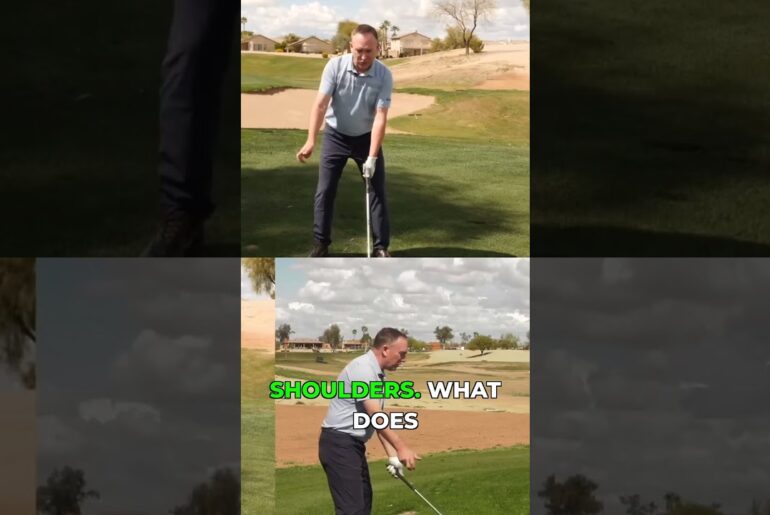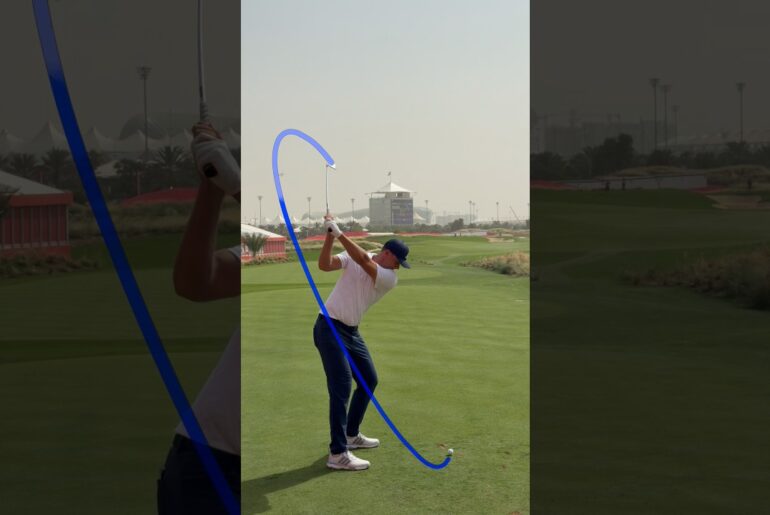Pivoting is different than rotation in its purest form. Rotation is about a central axis, while pivot or using an eccentric axis is the curvilinear motion needed in the golf swing. Using Gears, you will see the difference, between rotation and the cam action needed in the golf swing. Don’t be afraid of pivoting using your lead side as the post. A lot of great tour players do it this way. It is not the only way but a great way for iron compression.
Thanks for watching.
Tony
#golfskill #golftips #golfinstruction #consistentgolf #effortlesspower #pga #pgainstruction
#golfengineering #golftechnique #golfswing
Hey golfers, is rotation ruining your game? And you may be going, “What do you mean I have to rotate? Been told to rotate.” And I want to give you a little bit different perspective on what good rotation is from the lower body in the golf swing. So, if you’ve been told to just open up, the question is, how are you doing it? And I find myself and and You’ll see here in the gears video that I did, you’ll see that a lot of people try to rotate in its purest sense. Now, what is rotation? It is the a body, we’ll say the pelvis or anything. You can rotate this shaft and you can see the head moving around. Okay. But if I rotated from the center of mass of this head and then we’d see the shaft moving around. Okay, the center of the spot wouldn’t be moving. So the question is are we rotating from a a pivot point or off axis or offc center axis eentric axis it’s called or are we rotating around the center of our body. So if you rotate around the center of the body which is just kind of this imag when I’m standing straight up it’s this imaginary rod that goes right through the middle of my body. If I rotate around my center, I’m going to get in this position at impact, which is not a strong position, especially with irons. So, we want an off center rotation or a pivot where we get this lead leg to be the pivot point and we can then work around it. Now, we’re rotating totally differently. So understand how you’re rotating is more important than the rotation itself. I could be open at impact, but my pressure could be on my back foot, sticking the club in the ground, flipping the hand uh club head down at the bottom could be a mess, but I could be really open. It’s not what we want. So we want to get into that post and then open up. So it’s a different type of rotation. It’s a camlike action. And it combines both the linear and the rotary type of motion together creating this curve linear motion that allows us to be able to deliver the club stronger in the ball. So take a look at this gears video and see what I mean about that and how you can do this. Okay, golfers, let’s take a look at my swing, which I’m working on, and one of the issues I have in my swing that I’ve learned from gears versus this PJ Tour winner setups. You can see he has a touch more secondary tilt than I do, but only by about a degree. So, that’s really not uh a significant amount. Let’s see what happens up to the top because I gez I thought I had more but let’s see what we got. I’m actually a little bit of reverse pivot which I was shocked because I thought I had too much secondary tilt. So you can see difference between 93 degrees versus we’ll call it 89.84 90°. And then what we want to do what I want to do is talk about this pivot. Okay. So the difference between rotation around a center axis versus a pivot off an eccentric axis or offc center a axis in the in the pelvis. So the what I want you to pay attention to is this green spine line what happens on the way down. And there’s both lateral shifts. So, if you look at pelvis sway, you can see this tour player’s already got almost 4 inches of pelvis sway. I’m only at inch and a half touch over. So, definitely I’m not moving laterally enough to set my post up. I’m t staying too centered. But what’s interesting is you can actually see I have more secondary tilt right now. So, how did that happen? That’s just my body, upper body staying back. My head’s staying still. Instead of everything shifting forward, you can see the rib cage sway of this tour player. Again, moving not as much as the pelvis, which you that you that’s correct position. You have a little bit of secondary tilt, but mine is uh almost the same amount as my pelvis. So, I am not shifting my pelvis enough to get in position. And this is really kind of bringing it right down to impact. the telltale sign. Take a look at where this line is, this spine line. I’m not even close to posting up. I’m staying more center posted. And what that does is cause a lot of issues, a lack of compression through impact. And again, this is an example of what happens when you try to stay keep your head still and rotate. That combination reduces the pivot, doesn’t allow us to get up into the lead side, and we lose a lot of rotation right there. And it’s rotation around this off axis pivot, not a centered pivot. And so the hips don’t open up as much or anything else. And the rest of this looks so bad, I don’t even want to show you. So we got to get used to posting up into that lead leg and pivoting around that eccentric axis off that lead leg. Hey golfers, thanks for watching. I really look forward to sharing with you this more of this athletic movement to help improve your golf swing. It’s a little different approach, but hey, with the gear system, we’re going to know and quantify those movements to be correct. So this way there’s no guessing. We actually use data to help develop feel and we use the feel to manage the data. So don’t worry about it. Not over technical. Again, we’re going to keep it simple and help you play better golf. Thanks for watching. Don’t forget to subscribe. got a lot of videos to bring get to you. Have a good day.








1 Comment
Very interesting. Apart from simply focusing on moving correctly, my question is whether other factors prevent golfers from moving the hips better. Lack of flexibility? Moving the hands or upper body poorly in transition? And do any of the AI video analysis systems do a good enough job to get close to what GEARS provides?